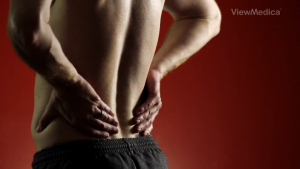RACZ Caudal Neurolysis Overview
 Lysis of epidural adhesions is an outpatient procedure that is performed in the Operating Room under strict sterile condition. When brought to the Operating Room, you will be connected to monitoring equipment (EKG monitor, blood pressure cuff, and a blood-oxygen monitoring device). The doctor or nurse will start an intravenous line and give some medicine to help you relax. You may also receive an antibiotic. The procedure is performed with you lying on your stomach. The doctor will cleanse your lower back with antiseptic solution and inject some numbing medicine at the base of your spine. You may feel a burning sensation for a few seconds. After the area is numb, the doctor will make a small incision and insert a dilator tube through which the catheter will pass. Although you will not feel any pain, you will feel a sense of pressure.
Lysis of epidural adhesions is an outpatient procedure that is performed in the Operating Room under strict sterile condition. When brought to the Operating Room, you will be connected to monitoring equipment (EKG monitor, blood pressure cuff, and a blood-oxygen monitoring device). The doctor or nurse will start an intravenous line and give some medicine to help you relax. You may also receive an antibiotic. The procedure is performed with you lying on your stomach. The doctor will cleanse your lower back with antiseptic solution and inject some numbing medicine at the base of your spine. You may feel a burning sensation for a few seconds. After the area is numb, the doctor will make a small incision and insert a dilator tube through which the catheter will pass. Although you will not feel any pain, you will feel a sense of pressure.
The doctor will manipulate the catheter to the area suspected of causing your pain, and, with the assistance of a special X-ray machine called a fluoroscope, periodically inject a radiopaque dye (contrast solution) into the epidural space. During the procedure, the doctor will try to reproduce your pain and will ask you if this causes your usual pain or if it causes a different pain. Once the suspected pain- producing area is located, the doctor will break up the adhesions and inject a small mixture of numbing medicine (anesthetic), normal saline, and anti- inflammatory medicine (cortisone/steroid). After the procedure, your skin will be cleansed and a bandage applied. We ask that you remain at the Clinic until the doctor feels you are ready to leave.

Before and After the Procedure and the Risks
Before the Procedure
Do not eat or drink anything after midnight the day before the procedure. If you are on medications, you may take them with sips of water. If you are a diabetic, discuss your medication with your doctor. You may need to stop taking certain medications several days before the procedure. Please remind the doctor of all prescription and over-the-counter medications you take, including herbal and vitamin supplements. The doctor will tell you if and when you need to discontinue the medications. Tell the doctor if you develop a cold, fever, or flu symptoms before your scheduled appointment.
After the Procedure
You may experience some abdominal pain, bruising, and swelling at the incision site. This will be treated with medication. You can also apply an ice pack to the area. Keep the area clean and dry to help prevent skin infection. You may experience a tingling or electrical buzzing sensation in the area of your usual pain. Although your pain may not totally go away, you should have enough relief to help you function better. You may experience some muscle discomfort where the needles were place. This may be treated with a mild pain reliever such as Tylenol.
Do not drive for the remainder of the day. Please have an adult drive you home or accompany you in a taxi or other public transportation. Depending on how you feel, you may resume normal activities and return to work in one to three days.
Procedure Risks
The risks are minimal but potentially include: Infection, spinal cord compression, meningitis, spinal fluid leak, bleeding, movement of the wires, and hardware failure.

